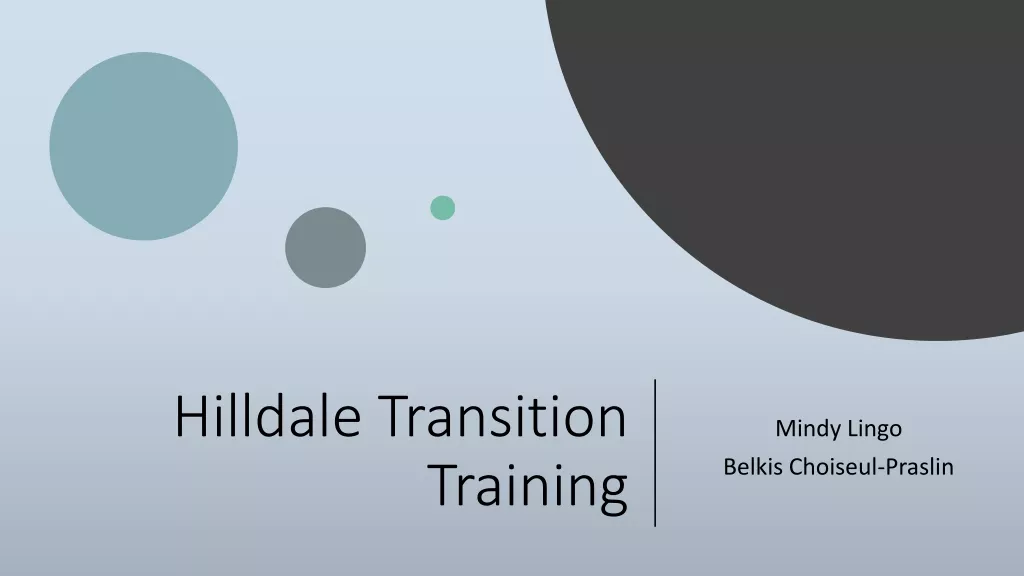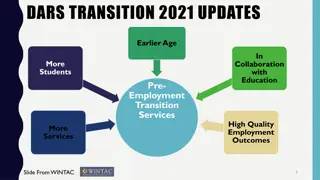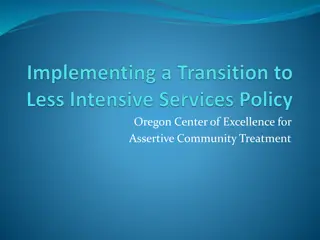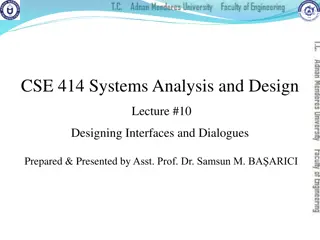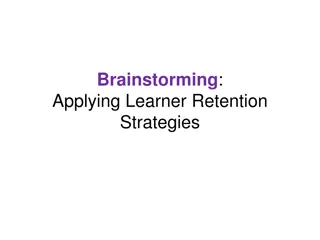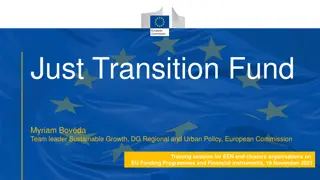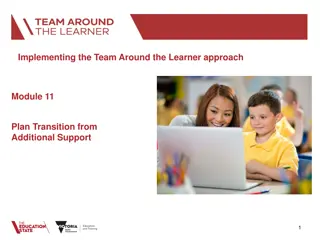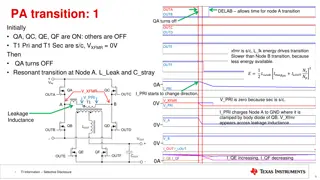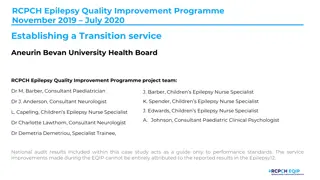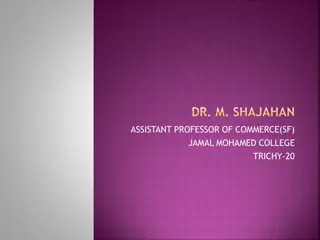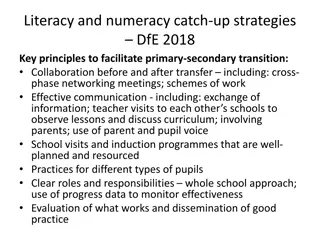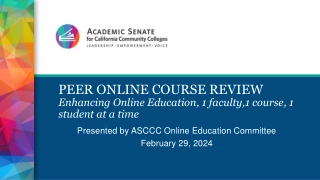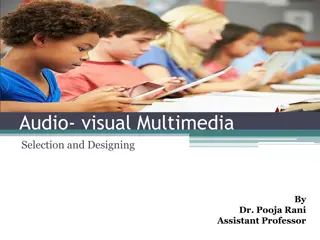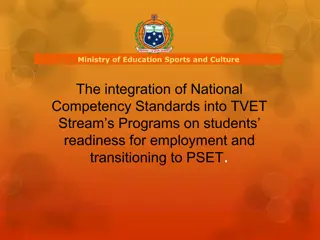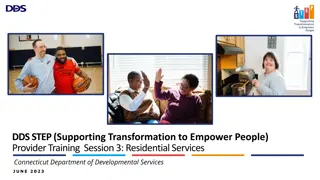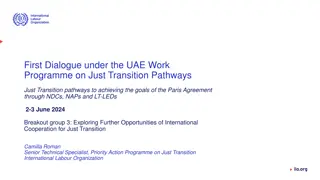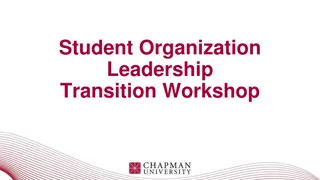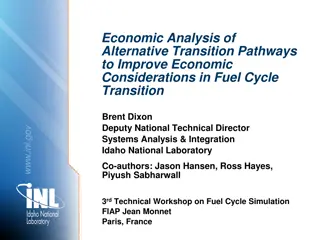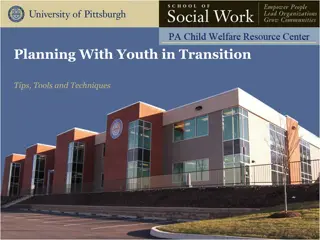Designing Effective Transition Strategies in Course Programs
Explore the process of embedding transition into course design and program structure for effective learning outcomes. Discover innovative approaches such as cultural adaptation, textual re-orientation, and personalized tutorials to support students' transition journey. Overcome challenges and empower students through a thoughtful and engaging transition strategy.
Download Presentation

Please find below an Image/Link to download the presentation.
The content on the website is provided AS IS for your information and personal use only. It may not be sold, licensed, or shared on other websites without obtaining consent from the author. Download presentation by click this link. If you encounter any issues during the download, it is possible that the publisher has removed the file from their server.
E N D
Presentation Transcript
Building transition into course design Mike Groves Birmingham International Academy University of Birmingham
Context How to design transition into a programme Assumption that transition is not an event, it s a process Transition is not monolithic or lockstep Or easy This is not going to cover very familiar ground, such as autonomy vs direction, EGAP vs ESAP, discourse vs language etc
Outline Some ideas of how transition can be embedded into (mostly EAP) foundation modules Cultural adaptation Textual re-orientation Tutorial definition Assessment process Group discussion Plenary discussion
What is Transition In this context Language Knowledge Attributes Self awareness
Cultural Adaptation Instead of allowing students the space to adapt independently, giving them the language to discuss and understand the process of acculturation. Laissez Faire Guided Student paced Student directed Equips students with understanding Empowers students to communicate Can piggy back off established schemes- eg Pass Birmingham Vulnerability to stereotypes Lack of skills Fossilisation Needs knowledgeable teachers Runs the risk of box ticking Students may be unwilling to discuss, even with peers.
Textual re-orientation Instead of using short, lesson length texts written for EAP books, the course is based around longer, multi-lesson texts, leading up to formative or summative assessment Short Pseudoacademic texts Long Pseudo academic texts Easy to find Easy to manage in discreet chunks Self-contained. Can be focussed on students needs Opens up classroom time More representative of standard UG practice Allows themes to build to allow co- development of cognitive and linguistic skills Less representative of standard UG practice Less authentic (?) Lack of autonomy Requires students to read at home Harder to find/create
Tutorials vs Reflection Instead of 1 free 20 minutes of 1-1s every few weeks, the students have to complete a task around a personal attribute and how they can develop it Blank Allows students to lead discussions Allows students to raise problems Gives ownership of space to teacher/student Structured Move beyond numbers Promotes reflective attitude Encourages Dweck s growth mindset Allows planned development of personal attributes Can be scattergun Can get bogged down Risks empty conversations Might get in the way of genuine tutorial needs Risks becoming a box ticking exercise Students need to prepare Some tutor resistance
Process vs Product Submissions Students submit their essays in stages, for feedback and improvement. This is graded (This is an idea I learned from the Nottingham Business Foundation) Single More realistic Less marking Easier to QA Multiple Allows deeper tutor guidance Allows students to get it wrong in the shallow end Confidence building Can maybe discourage cheating Encourages students to engage in the process Can leave students vulnerable to accusation of Plagiarism Can neglect study skills The IELTS effect Time consuming Depends on student engagement Defined assessment tasks might overtake individuality
Discussion Try to work in groups of three to four, from different institutions. Discuss these from a real world and ideal world point of view. Teaching cultural awareness Using longer texts Structuring tutorials Process submissions Then we can do some plenary feedback.



